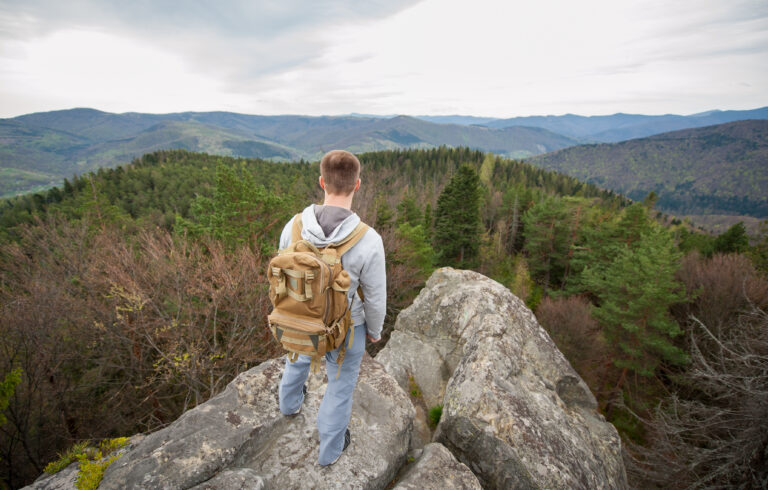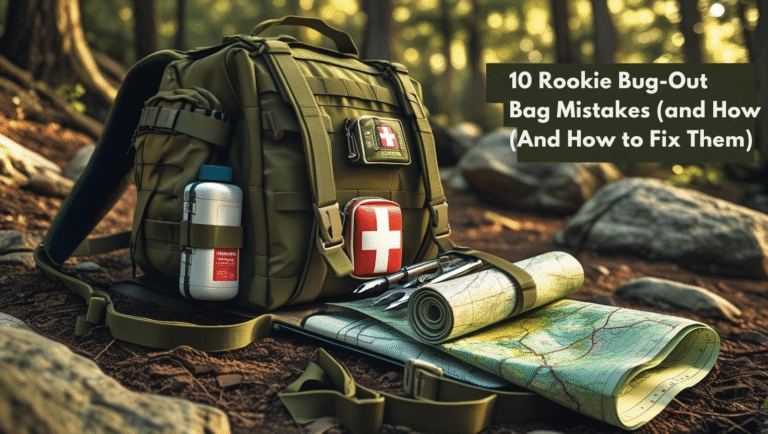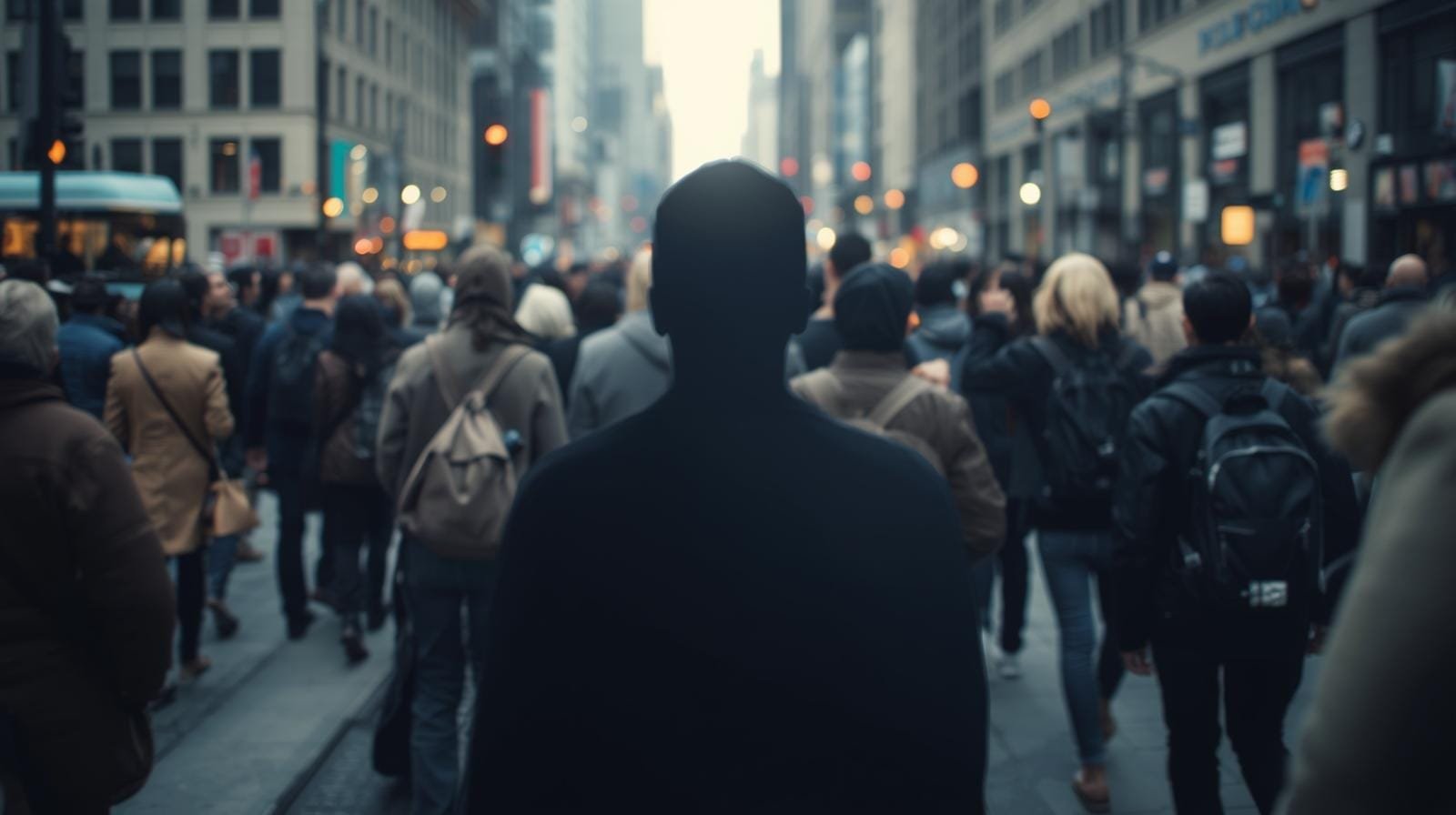
How to Disappear in a Crowd (Without Looking Suspicious): The Ultimate Guide to Urban Invisibility
Ever felt like you’re being watched? Need to move through crowded spaces without drawing attention? Master the art of blending in with these proven techniques.
The Modern Need for Anonymity
In our hyper-connected world, privacy has become a luxury. Whether you’re a journalist protecting sources, an individual avoiding harassment, or someone who simply values their anonymity, learning how to disappear in a crowd is an invaluable skill. From surveillance cameras on every corner to facial recognition technology becoming mainstream, the ability to move unnoticed through crowds has never been more relevant—or more challenging. Understanding urban invisibility techniques is essential for maintaining personal privacy protection in today’s world.
Consider this: the average person in a major city is captured on camera over 300 times per day. Social media has made it easier than ever for strangers to identify and track individuals. Yet with the right knowledge and techniques, you can learn how to disappear in a crowd and move through public spaces with confidence and discretion.
This isn’t about paranoia—it’s about taking control of your personal privacy protection and applying proven urban invisibility techniques in an increasingly transparent world.
The Science Behind Human Invisibility
Understanding Visual Attention
Human perception operates on fascinating principles that can work in your favor when implementing urban invisibility techniques. These cognitive mechanisms, evolved over thousands of years for survival, create predictable patterns that skilled practitioners can exploit. Our brains are wired to notice:
- Anomalies: Things that don’t fit expected patterns
- Movement: Sudden or erratic motion draws immediate attention
- Contrast: Colors, textures, or styles that stand out from surroundings
- Eye contact: Direct gaze creates instant connection and memory
The key to disappearing lies in understanding these triggers and systematically neutralizing them. When you master how to disappear in a crowd, you essentially become invisible by working with, rather than against, human psychology.
The Psychology of Crowds
Crowds provide natural camouflage through several psychological phenomena that anyone learning how to disappear in a crowd should understand:
Diffusion of Responsibility: In groups, individuals feel less personally accountable for noticing details about others.
Cognitive Overload: The brain filters out “unimportant” information when processing too many visual stimuli simultaneously.
Social Proof: People assume others are more observant, leading to decreased individual vigilance.
Bystander Effect: The larger the crowd, the less likely any individual will take action or pay close attention to anomalies. This principle is fundamental to understanding how to disappear in a crowd effectively and forms the basis of many personal privacy protection strategies.
Factors That Increase/Decrease Visibility in Crowds
HIGH VISIBILITY FACTORS | LOW VISIBILITY FACTORS
--------------------------------|--------------------------------
Bright/neon colors | Neutral, muted tones
Unusual clothing styles | Common, unremarkable clothing
Loud conversations/behavior | Quiet, calm demeanor
Going against crowd flow | Moving with crowd patterns
Standing still in moving crowds | Matching crowd's pace
Distinctive accessories | Minimal, common accessories
Unusual height/build | Average build and posture
Eye contact with others | Avoiding direct eye contact
Master These Proven Invisibility Techniques
1. The Art of Neutral Appearance
Color Psychology for Invisibility
Your clothing choices can make or break your efforts to learn how to disappear in a crowd. Research shows certain colors naturally fade into the background:
- Navy blue: The most forgettable color in urban environments
- Charcoal gray: Blends with shadows and concrete
- Beige/khaki: Disappears in natural and indoor lighting
- Black: Effective in evening/night scenarios but can stand out during day
Avoid at all costs: Red, orange, yellow, bright pink, or any fluorescent colors. These trigger the brain’s attention mechanisms instantly.
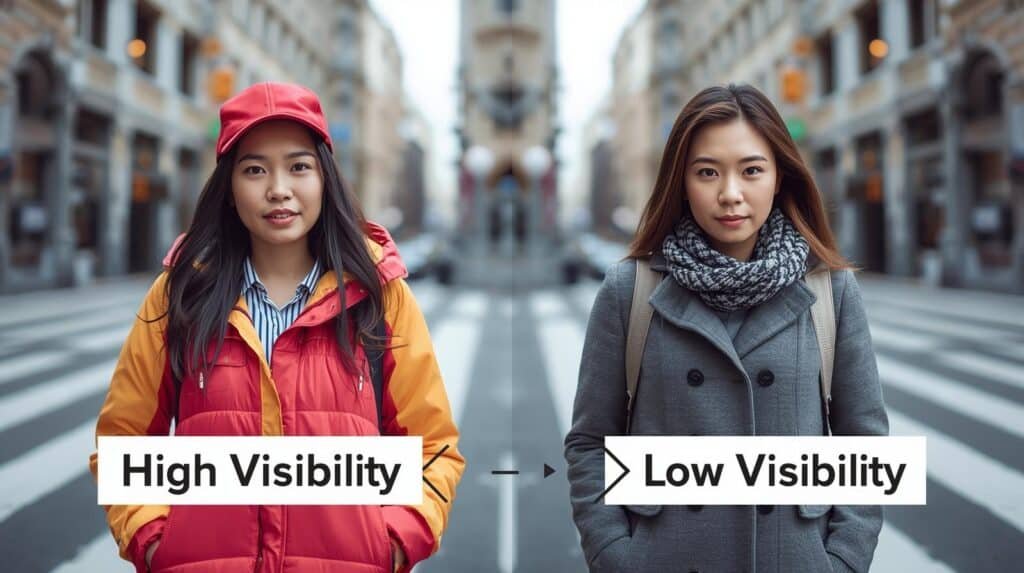
Developed by security professionals, this concept is central to learning how to disappear in a crowd—it involves becoming so unremarkable that you’re essentially invisible. This foundational urban invisibility technique includes key elements such as:
- Clothing that matches local demographics and weather
- Neutral facial expressions (slight frown or concentration works best)
- Average walking pace and posture
- Minimal to no visible technology or accessories
- Hair and grooming that matches local norms
These urban invisibility techniques provide effective personal privacy protection when applied consistently.
2. Movement Mastery Techniques
Flow State Integration
The most invisible people move like water—following natural patterns without creating disruption. This technique is essential when learning how to disappear in a crowd:
- Mirror the crowd’s pace: Walk 10-15% slower than your natural speed in busy areas
- Use crowd currents: Position yourself in the middle third of pedestrian flows
- Avoid sudden direction changes: Plan your route to minimize sharp turns
- Master the “drift”: Gradually change direction over 20-30 steps rather than pivoting
Timing Strategies
Peak invisibility occurs during specific times, and knowing how to disappear in a crowd means understanding these optimal windows:
- Rush hour: 7-9 AM and 5-7 PM when everyone is focused on their commute
- Lunch crowds: 11:30 AM – 1:30 PM in business districts
- Event dispersal: Immediately after concerts, games, or large gatherings end
- Weather transitions: During light rain when people are distracted by conditions
Optimal Invisibility Times by Location Type
LOCATION TYPE | PEAK INVISIBILITY WINDOW | VISIBILITY RISK LEVEL
--------------------|-----------------------------|----------------------
Business District | 12:00-1:00 PM (lunch) | Low
Shopping Mall | 2:00-4:00 PM (afternoon) | Medium
Transit Hub | 8:00-9:00 AM (rush hour) | Low
Entertainment Area | 6:00-8:00 PM (dinner) | Medium
Residential Area | 10:00-11:00 AM (errands) | High
Tourist Zone | 11:00 AM-2:00 PM (crowds) | Medium
Advanced Positioning Strategies
The Third Principle
Security experts know that people naturally focus on the first person they see, occasionally the second, but rarely the third. This insight is crucial for anyone learning how to disappear in a crowd—position yourself as the third person in any group or line whenever possible. This urban invisibility technique works because of predictable human attention patterns.
Blind Spot Utilization
Humans have predictable blind spots in their attention:
- Peripheral vision gaps: Stay 15-20 degrees outside direct sight lines
- Height blind spots: Position yourself slightly behind taller individuals
- Distraction shadows: Use phone users, parents with children, or people in conversation as natural shields
Environmental Camouflage
Your surroundings can provide excellent cover when you’re mastering how to disappear in a crowd:
- Architectural elements: Use pillars, signs, and structural features to break up your silhouette
- Lighting transitions: Move through areas where bright and dim lighting meet
- Natural barriers: Bushes, trees, and landscaping create visual interruptions
- Crowd density variations: Use the edges where sparse and dense crowds meet
4. Psychological Invisibility Techniques
The Confidence Paradox
Counter-intuitively, appearing slightly preoccupied or focused makes you less memorable than trying to be completely invisible. Understanding this paradox is key to learning how to disappear in a crowd. The key is controlled distraction:
- Carry a common item (coffee cup, newspaper, phone) but don’t overuse it
- Maintain a slight expression of concentration, as if thinking about something mundane
- Move with purpose but not urgency
- Occasionally check the time or look at signs as if navigating
Social Camouflage
Humans are less likely to scrutinize people who appear to belong, which is fundamental to understanding how to disappear in a crowd. These personal privacy protection methods include:
- Dress for your environment: Business attire in financial districts, casual wear in shopping areas
- Adopt local patterns: If everyone carries coffee, carry coffee; if they use umbrellas, have one ready
- Mirror behavior subtly: Match the general energy level and walking style of those around you
Effectiveness of Different Camouflage Techniques
TECHNIQUE | EFFECTIVENESS RATING | DIFFICULTY LEVEL
----------------------------|------------------------ |------------------
Neutral Clothing | ★★★★★ | Easy
Crowd Flow Matching | ★★★★☆ | Medium
Peripheral Positioning | ★★★★☆ | Medium
Environmental Blending | ★★★☆☆ | Hard
Psychological Distraction | ★★★★★ | Medium
Social Mimicry | ★★★☆☆ | Hard
Timing Optimization | ★★★★☆ | Easy
5. Technology and Digital Invisibility
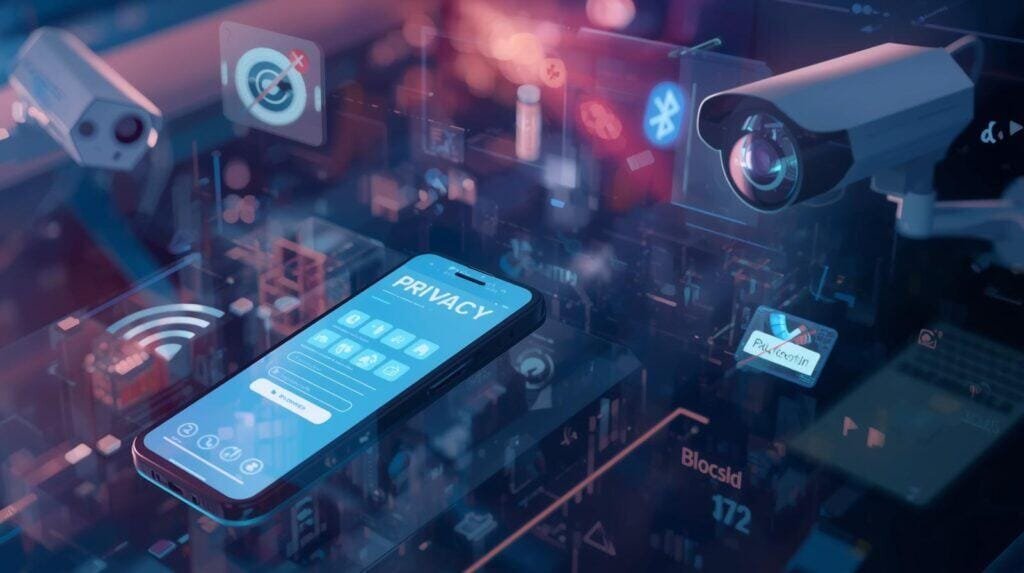
Modern personal privacy protection requires understanding how technology can compromise your efforts to remain unnoticed.
Smartphone OpSec
Your phone can betray your presence in multiple ways when you’re trying to learn how to disappear in a crowd:
- Screen brightness: Keep it at 50% or lower to avoid creating a beacon
- Sound discipline: All notifications on silent, no phone calls in sensitive areas
- Camera awareness: Assume all phones around you are potentially recording
- WiFi/Bluetooth: Disable when not needed to prevent tracking
Facial Recognition Countermeasures
Modern challenges require modern solutions when learning how to disappear in a crowd. These urban invisibility techniques address current surveillance technology:
- Angle awareness: Keep your face at a 15-degree downward angle while walking
- Natural barriers: Use hats, sunglasses, or hair strategically (but don’t overdo it)
- Gait modification: Slightly alter your walking rhythm and stride length
- Pattern breaking: Vary your routes and timing regularly
Your Step-by-Step Implementation Plan
Phase 1: Foundation Building (Week 1-2)
Day 1-3: Wardrobe Assessment
- Audit your current clothing for high-visibility items
- Acquire 2-3 neutral outfits appropriate for your typical environments
- Practice the “gray man” principle in low-stakes situations
Day 4-7: Movement Practice
- Spend 30 minutes daily observing crowd patterns in your area
- Practice matching pace and flow in busy locations
- Work on peripheral positioning techniques
Week 2: Integration
- Combine clothing and movement techniques
- Test your invisibility in familiar crowded locations
- Note which combinations work best for your body type and local environment
Phase 2: Advanced Application (Week 3-4)
Timing Mastery
- Map the optimal invisibility windows for your regular locations
- Practice transitioning between different crowd types and densities
- Develop backup routes and timing alternatives
Psychological Integration
- Master the confidence paradox in various settings
- Practice social camouflage techniques
- Work on environmental awareness and adaptation
These advanced urban invisibility techniques require consistent practice to ensure effective personal privacy protection.
Phase 3: Expertise Development (Ongoing)
Situational Adaptability
- Practice in different weather conditions
- Test techniques in various cultural and demographic settings
- Develop location-specific strategies
Continuous Improvement
- Regular assessment of technique effectiveness
- Adaptation to new surveillance technologies
- Building situational awareness skills
Mastering these urban invisibility techniques ensures long-term personal privacy protection across all environments.
Weekly Practice Schedule
WEEK | FOCUS AREA | DAILY PRACTICE TIME | SUCCESS METRICS
--------|----------------------------|---------------------- |-------------------
1 | Clothing & Basic Movement | 30 minutes | Blend in 80% of time
2 | Flow Integration | 45 minutes | No second looks
3 | Positioning & Psychology | 60 minutes | Navigate unnoticed
4 | Advanced Techniques | 45 minutes | Mastery demonstration
Emergency Protocols
If You’re Noticed:
- Don’t panic or change behavior drastically
- Continue your current activity naturally
- Use the next crowd transition to reposition
- Implement a pre-planned exit strategy
High-Risk Situations:
- Security checkpoints or increased police presence
- Events with professional surveillance
- Areas with known facial recognition systems
- Situations where your presence might be specifically anticipated
Legal and Ethical Considerations
Remember:
- These techniques are for personal privacy and safety
- Always comply with local laws and regulations
- Avoid restricted or private areas
- Use these skills responsibly and ethically
The urban invisibility techniques outlined in this guide are designed for legitimate personal privacy protection purposes only.
- Consider the impact on others and society
When NOT to Use These Techniques:
- In secure facilities where you have legitimate access
- Around law enforcement when you have nothing to hide
- In situations where transparency is expected or required
- When helping others or in emergency situations
In Closing: Mastering Urban Invisibility
The ability to move unnoticed through crowds is part art, part science, and entirely achievable with proper knowledge and practice. In our surveillance-heavy world, these skills provide valuable protection for your privacy and personal security.
Remember that true invisibility isn’t about becoming completely undetectable—it’s about controlling how much attention you attract and when. The goal is to move through public spaces with confidence, maintaining your anonymity while respecting others and following legal guidelines.
Start with the foundation techniques, practice regularly, and gradually build your expertise. With time and experience, you’ll develop an intuitive sense for crowd dynamics and personal invisibility that will serve you well in any urban environment.
The power to disappear in plain sight is ultimately the power to control your own visibility in an increasingly transparent world. Use it wisely.
Disclaimer: These techniques are presented for educational purposes regarding personal privacy and security. Always follow local laws and use these methods responsibly and ethically.
Heads-Up, Fellow Preppers:
Some links in this post are sponsored or affiliate links. If you click and buy, I may earn a small commission—enough to restock my peanut butter and maybe add one more can of chili to the stash. I only recommend gear I trust, use, and would hide in a bug-out bag.


